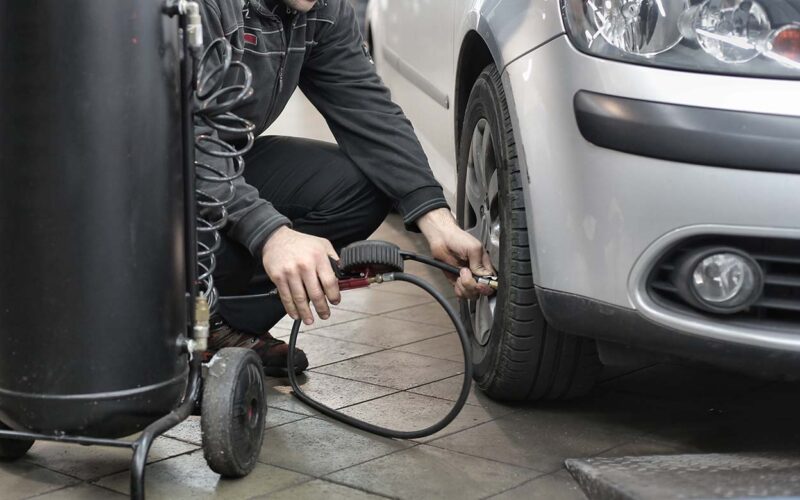Putting air in your tires is an important part of regular automotive maintenance. Keeping your tires properly inflated helps ensure a smoother ride, better handling, and improved fuel efficiency. Additionally, underinflated tires can cause accelerated tire wear and damage to the wheel itself. It’s important to check the pressure in your tires regularly and to add air when necessary.
Having the right amount of air in your car tires is essential for ensuring a safe and comfortable ride. Having too much or too little air can lead to an uncomfortable ride, increased fuel consumption, and even tire failure. Knowing how to properly add air to your tires is an important skill that all drivers should have. This article will explain how to put air in tires safely and correctly.
What You Need to Put Air In Tires
Before attempting to add air into your tires, you will need a few items:
• Tire gauge – This tool is used to measure the amount of air that is currently in your tire so you know how much additional air needs to be added
• Portable compressor or pump – This device is used for pumping air into the tire
• Tire valve stem caps – These are placed on each wheel after the desired amount of inflation has been reached; they help seal in the pressure and prevent leakage
• Safety glasses – Always wear safety glasses when working with tools or adding any type of liquid or gas into a tire; this will help protect your eyes from flying debris

Checking Tire Pressure
It’s important to first check the pressure in your tires before adding any air. You can do this by using a tire gauge to measure the pressure of each tire and noting what the desired pressure level should be. The correct amount of air pressure for your car’s tires can usually be found on the side of the driver’s door or in the owner’s manual.
Setting the Desired Pressure Level
Once you have checked and measured your tire pressures, you can now set your desired level. Using a portable compressor or pump, you will want to add additional air until it reaches the desired level that is listed in your owner’s manual. Once this level is reached, make sure to turn off the compressor or pump before replacing each tire valve stem cap onto its corresponding wheel.
Putting Air In The Tire
Now that all of your supplies are ready, it’s time to put air into your tires! Make sure to start with one wheel at a time; remove its valve stem cap and place it aside in a safe area so it doesn’t get lost or damaged. Then attach the compressor hose to that wheel’s valve stem by firmly pushing down on both pieces until they click into place.
Turn on the compressor or pump and begin to slowly add air until it reaches the desired level. Use your tire gauge to check the pressure throughout this process, and turn off the compressor or pump when you reach the correct pressure level. Next, replace each valve stem cap on its designated wheel before moving onto the next one.

Safety Tips for Pumping Air into Tires
When working with tools or adding any type of liquid or gas into a tire, it’s important to always take safety precautions:
• Always wear safety glasses when working with tools or putting air in tires – this will help protect your eyes from flying debris
• Make sure to double-check that all valve stems are securely in place before turning on any pumps – a loose connection could cause air leaks which can be dangerous!
• Never overfill a tire; if you exceed maximum recommended pressure levels, it could potentially cause a blowout or other damage
• If you don’t feel comfortable putting air in your own tires, take them to a professional instead
Conclusion
Knowing how to properly put air into your car’s tires is an important skill for all drivers. It’s important to always take safety precautions when working with any type of liquid or gas and make sure to double-check that all valve stems are securely in place before turning on any pumps. Following these instructions will help ensure you can safely and correctly get the right amount of air in your tires every time!
